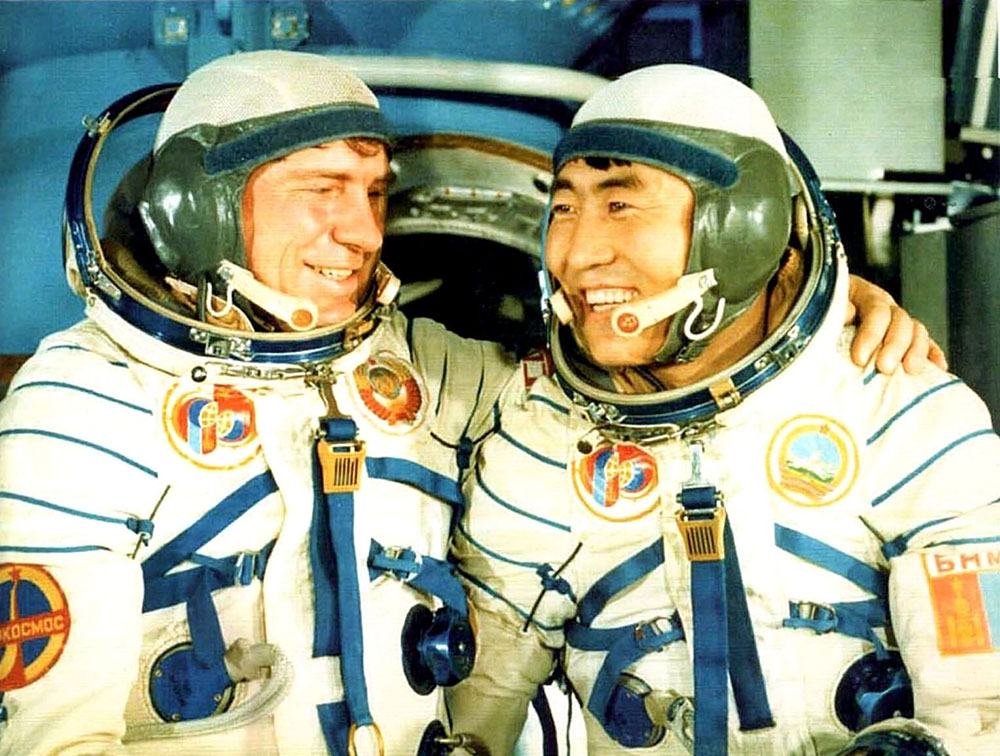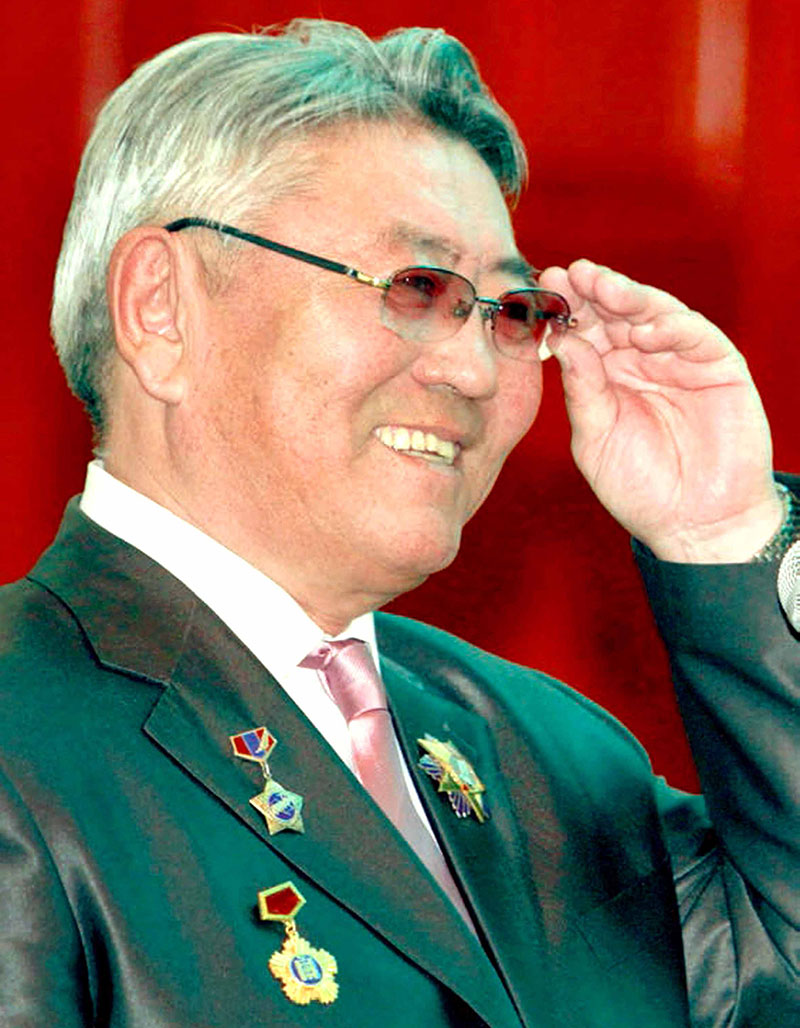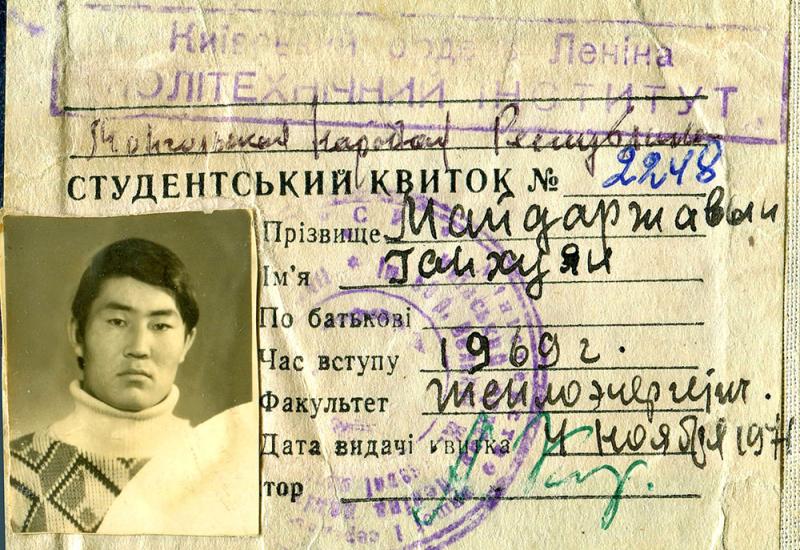This year the outstanding graduate of Igor Sikorsky Kyiv Polytechnic Institute would have turned 75 this year
In 1976, the former USSR decided to carry out the world's first international manned space flights in 1978-1983. The Mongolian People's Republic was among the nine countries that were to participate in this program. The program was called Intercosmos.
Historically, Mongolia, which was mainly engaged in nomadic livestock farming, had few experienced scientific and technical specialists. Therefore, unlike other countries, where the selection of astronaut candidates was carried out only among military pilots, civilian specialists also joined the selection process in Mongolia.
On March 18, 1978, by a decision of a special commission approved by the MNR government, two of the four candidates were finally selected: Jugderdemidijn Gurragchaa and Maydarjavin Ganzorig. The former was a military engineer who graduated from the Zhukovsky Military Air Engineering Academy in Moscow in 1977, and the latter was a civilian heating engineer who graduated from the Kyiv Polytechnic Institute in 1975.
✨
Maydarzhavyn Ganzorig (Ganhuyag) was born on February 5, 1949, into a family of Mongolian nomads, in which there were 2 other sons and 5 daughters. In 1955, his father B. Maydarzhav became the head of a production and cooperative union, and then the head of the somon (city) of Tsetserleg, where his entire family moved from the yurt. In 1958, Maidarzhavyn began studying at a 10-year-old secondary school. "He studied well. He was diligent in math and physics. He took part in school, regional and republican math competitions and won prizes every time," his younger brother Tumurbatar recalled. "He was a talented boy: he liked to draw, was fond of sports, and played musical instruments.
In September 1968, Ganzorig entered the preparatory faculty of Irkutsk State University. From his student profile: "...arrived at the faculty with unsatisfactory knowledge of natural sciences and very poor knowledge of the Russian language. ... He has very good abilities and can only get "excellent" grades. He is very inquisitive, knows how to apply theoretical knowledge in practice..."
After a year of training, in September 1969, he was sent to Kyiv Polytechnic Institute for further study. He was enrolled in the group of automation of heat and power processes (ATEP-167) of the Heat and Power Faculty. Here his abilities began to develop in a new direction.
Nataliia Pedos (Stasheiko), who was the head of this group at the time, shared her memories. "Our group was international: 12 students from Vietnam, 4 from Mongolia, and 9 from Ukraine. Among the Mongolians, Ganzorig stood out, whom we all called by his shortened name, Gana. He was a cheerful, sociable guy who was interested in almost everything - from our national customs to every word and expression heard on the street... He always treated us to national products brought from home, which we knew nothing about and had never tasted."
After graduating from Igor Sikorsky Kyiv Polytechnic Institute with a degree in thermal power engineering in 1975, Ganzorig went home and, by order of the Mongolian government, began working as an automation engineer at the thermal power plant No. 1 in Ulaanbaatar, the capital of Mongolia. Here he made a number of innovative proposals to ensure more efficient operation of the country's energy sector.
Since 1977, Mongolia has been selecting candidates for space flight under the Intercosmos program. Both military and civilian specialists took part in the selection process. Among the civilians, 13 people were initially selected based on their health and level of knowledge. Of these, only two were later selected - KPI graduates and classmates of Maydarzhavyn Hanzorig and Begsurean Tserendorzhyn. They were sent to work at the Space Research Department of the Physical and Technological Institute of the Academy of Sciences of Mongolia.
In 1978, Ganzorig was drafted into the Mongolian Armed Forces and sent to Moscow in late January for a more in-depth medical examination.
After being selected as a candidate for space flight by the Mongolian People's Republic, in October 1978, Ganzorig was appointed to the backup crew of the Soyuz 39 spacecraft. He began training at the Yuri Gagarin Cosmonaut Training Center. Natalia Ivanovna recalls: "After graduating from the institute, we no longer hoped to meet our foreign friends... Suddenly, in the summer of 1980, I received a letter. The envelope was signed in the familiar beautiful, smooth Ghanaian handwriting. What surprised me most was the return address: "Moscow Region, Zvezdnoye Mistechko". Gana said that he was studying at the Cosmonaut Training Center. I was very surprised - what could be the connection between a thermal power engineer and an astronaut? We began to correspond, and only after the joint Soviet-Mongolian space flight did Gana inform me that he was part of the backup crew as a research astronaut."

The flight of the Soyuz 39 spacecraft and the Salyut 6 orbital station took place from March 22 to 30, 1981. The main crew was Vladimir Dzhanibekov and Zhugderdemidin Gurragchaa, and the backup crew was Vladimir Lyakhov and Maydarjavin Ganzorig. Preference was given to the Mongolian military man, although Ganzorig was better prepared to conduct the planned scientific experiments in orbit due to his level of knowledge. And he proved it in the future...
During the flight, 25 different experiments were performed - the largest number in one flight for the entire period of the Intercosmos program. Among them are Biosphere-Mon and Erdem, geophysical studies of the territory of Mongolia. This territory is very large in area (almost three times the size of Ukraine) and has a difficult terrain. Mountains and hills, sparsely populated steppes, and the vast Gobi Desert made it difficult to conduct ground-based research in Mongolia. Therefore, observations and photographs were taken from space to study geological features and the condition of pastures, determine the area of water resources, and identify areas promising for mineral exploration. The Ulaanbaatar experiment also studied air pollution over the Mongolian capital.
Although Ganzorig did not take part in the space flight, he received full theoretical and practical training for performing experiments in orbit. He was awarded the title of "Pilot-Cosmonaut of the MNR". After the flight, it was up to him to process the results of space experiments on the ground and conduct further scientific research in the interests of his homeland. In May 1981, he was appointed a senior researcher at the Astronautics Sector of the Mongolian Institute of Physics and Technology (MIPT), and in November he went to Moscow and began working on his PhD thesis on remote sensing of the Earth from space at the Institute of Space Research of the USSR Academy of Sciences. He took part in an experiment to study the state of Mongolia's grass vegetation based on the results of spectroscopic observations from space. In 1984, after successfully defending his dissertation on "Assessment of the possibility of studying the state of vegetation in the field zone of Mongolia by means of aerospace sensing," he was awarded the degree of Candidate of Technical Sciences. In April of the same year, he and the Ambassador of Mongolia to the USSR visited Kyiv Polytechnic Institute as an honored guest.
From 1984 to 1990, Maydarjavyn Ganzorig headed the Scientific and Methodological Laboratory of Aerospace Information Processing at the Mongolian Institute of Physics and Technology. In 1990, he was appointed director of the Mongolian Institute of Informatics and Remote Sensing and headed the Mongolian International Working Group on Remote Sensing "Intercosmos". He developed and led the international project GeoMon-90, which aimed to simultaneously study the dynamics of geosystems at the air, space, and ground levels.
Within the framework of the Mongolian-Japanese Gurvan-Gol project (1989-1993), Ganzorig worked in the Mongolian part of the processing, use, and geophysical observation of aerospace information and published research reports and articles on the possibilities of using geospatial systems for archaeological research.
His scientific achievements were recognized worldwide. In 1997, Maydarzhavyn Hanzorig was awarded the Osborne Maitland Miller Gold Medal, which the American Geographical Society awards to the world's best scientist in the field of cartography. It is worth noting that this medal was established in 1968 and only 8 scientists were awarded it until 2019. Ganzorig became the third... In 2006, he was awarded the title of "Distinguished Scientist of Mongolia" and in 2011, the highest state title of "Hero of Labor of Mongolia".

He worked as the director of the Institute of Informatics for 24 years until his retirement in March 2014. But he continued to work as a leading researcher and thematic leader of the institute.
Maydarjavin Ganzorig has published the book Satellites and Remote Sensing Devices and more than 170 scientific articles. He is a co-author of the Mongolian Encyclopedia of Space Sciences. He has published hundreds of popular science articles and interviews in social media, newspapers, magazines and books. He was a member of the conference of the Mongolian Academy of Sciences, a member of the National Academy of Engineering, and deputy chairman of the Academic Degrees Council of the University of Science and Technology. He became a Doctor of Technical Sciences and has been lecturing at the University of Mongolia since 1984 as a professor. Under his supervision, 3 PhD and 3 master's theses were defended. His work (co-authored) on "Methodology for processing data from multiple sources" was awarded second place at the 2005 Mongolian Science Prize.
Suddenly... Natalia Pedos (Stasheiko) recalls: "... On July 4, 2021, I received shocking news from Mongolia - our Hahn passed away... I immediately informed all my friends in Vietnam and Ukraine. We all loved Hahn very much for his sincerity, openness, and generosity of spirit, so everyone was very saddened by his sudden death. But the memory of our sincere, devoted friend, of the years of studying together and pleasant communication with him will always remain with us!"

